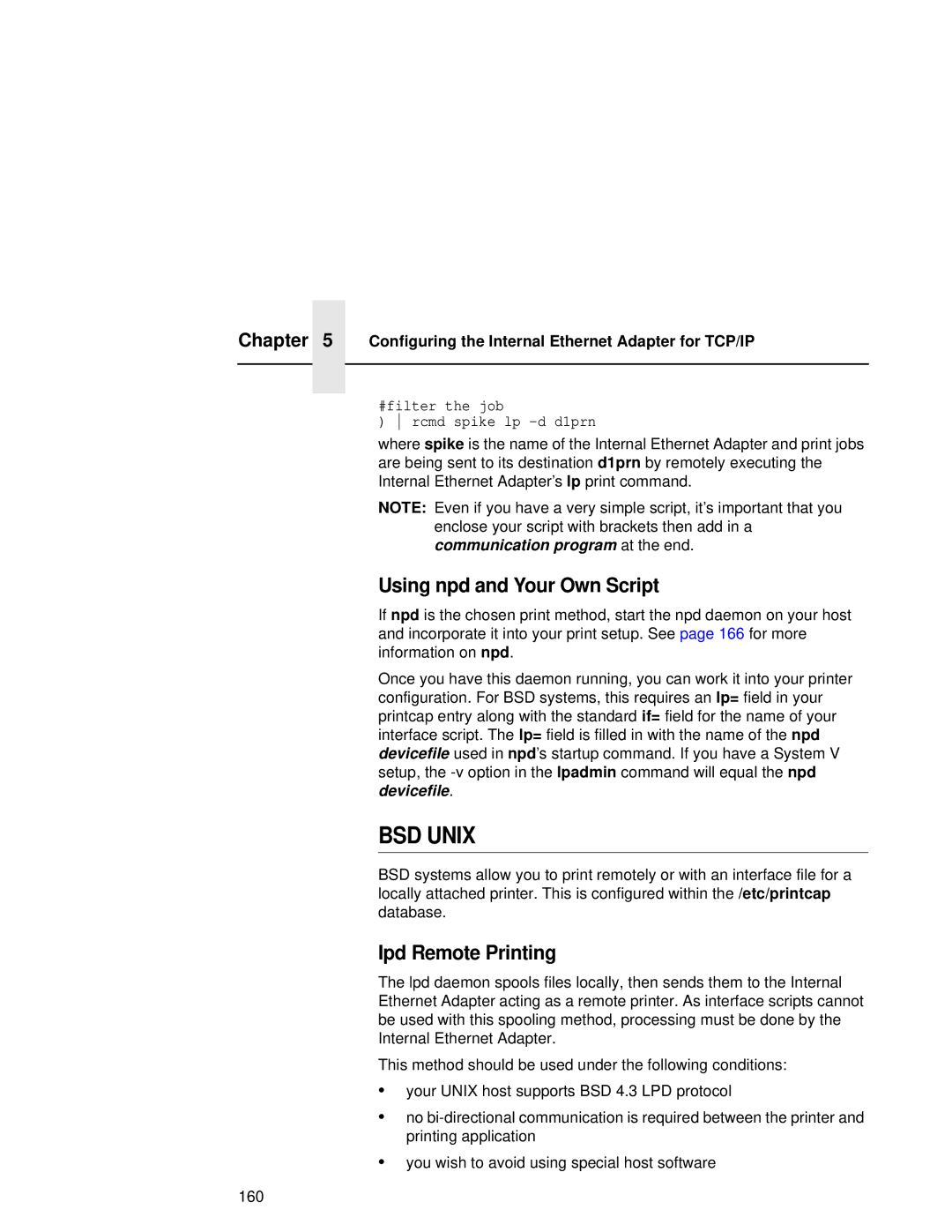Chapter | 5 | Configuring the Internal Ethernet Adapter for TCP/IP |
|
|
|
|
|
|
#filter the job
) rcmd spike lp
where spike is the name of the Internal Ethernet Adapter and print jobs are being sent to its destination d1prn by remotely executing the Internal Ethernet Adapter’s lp print command.
NOTE: Even if you have a very simple script, it’s important that you enclose your script with brackets then add in a communication program at the end.
Using npd and Your Own Script
If npd is the chosen print method, start the npd daemon on your host and incorporate it into your print setup. See page 166 for more information on npd.
Once you have this daemon running, you can work it into your printer configuration. For BSD systems, this requires an lp= field in your printcap entry along with the standard if= field for the name of your interface script. The lp= field is filled in with the name of the npd devicefile used in npd’s startup command. If you have a System V setup, the
BSD UNIX
BSD systems allow you to print remotely or with an interface file for a locally attached printer. This is configured within the /etc/printcap database.
Ipd Remote Printing
The lpd daemon spools files locally, then sends them to the Internal Ethernet Adapter acting as a remote printer. As interface scripts cannot be used with this spooling method, processing must be done by the Internal Ethernet Adapter.
This method should be used under the following conditions:
•your UNIX host supports BSD 4.3 LPD protocol
•no
•you wish to avoid using special host software
160
